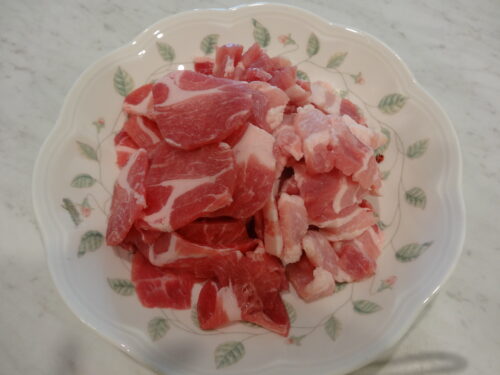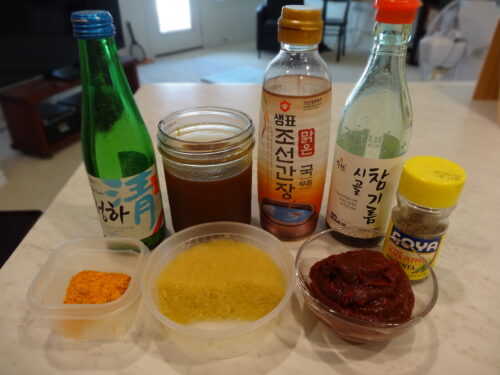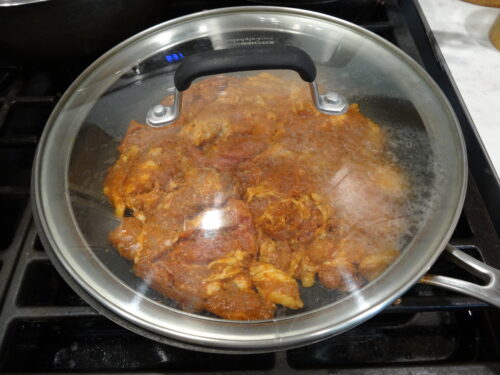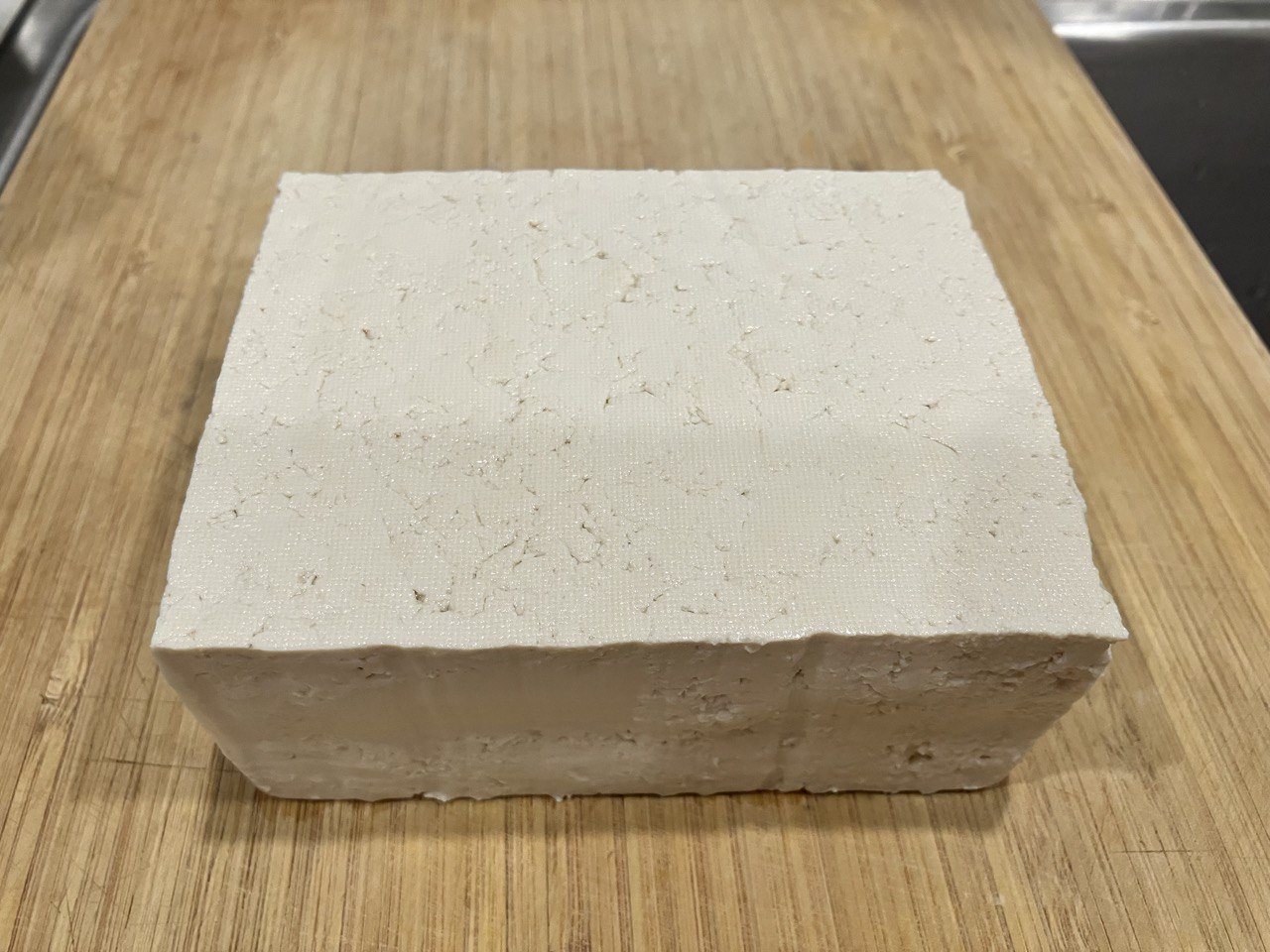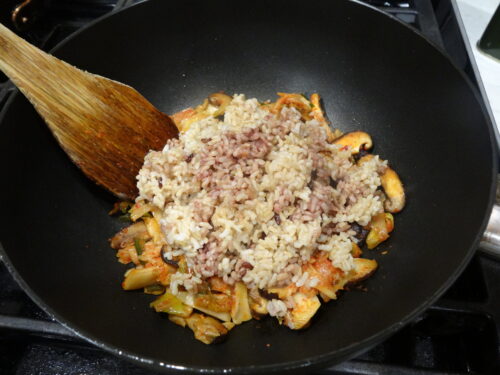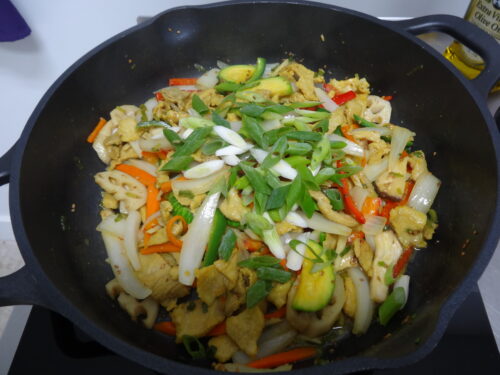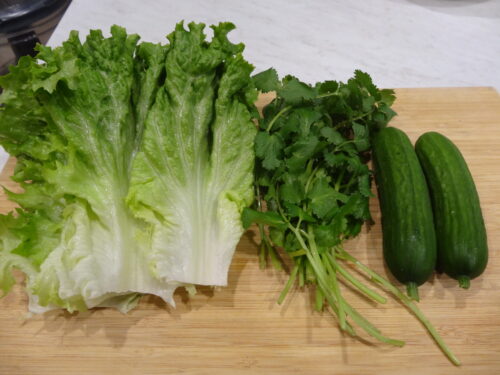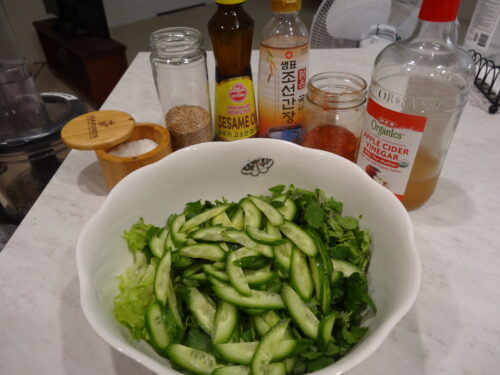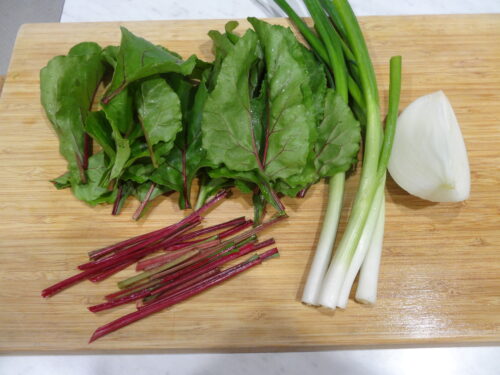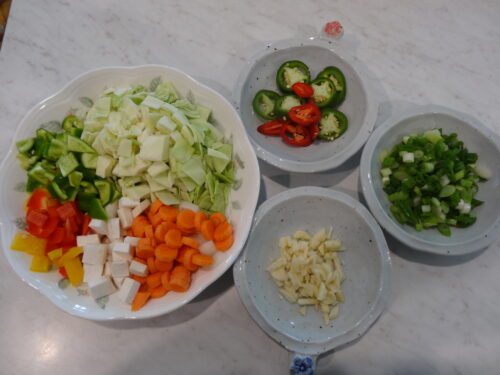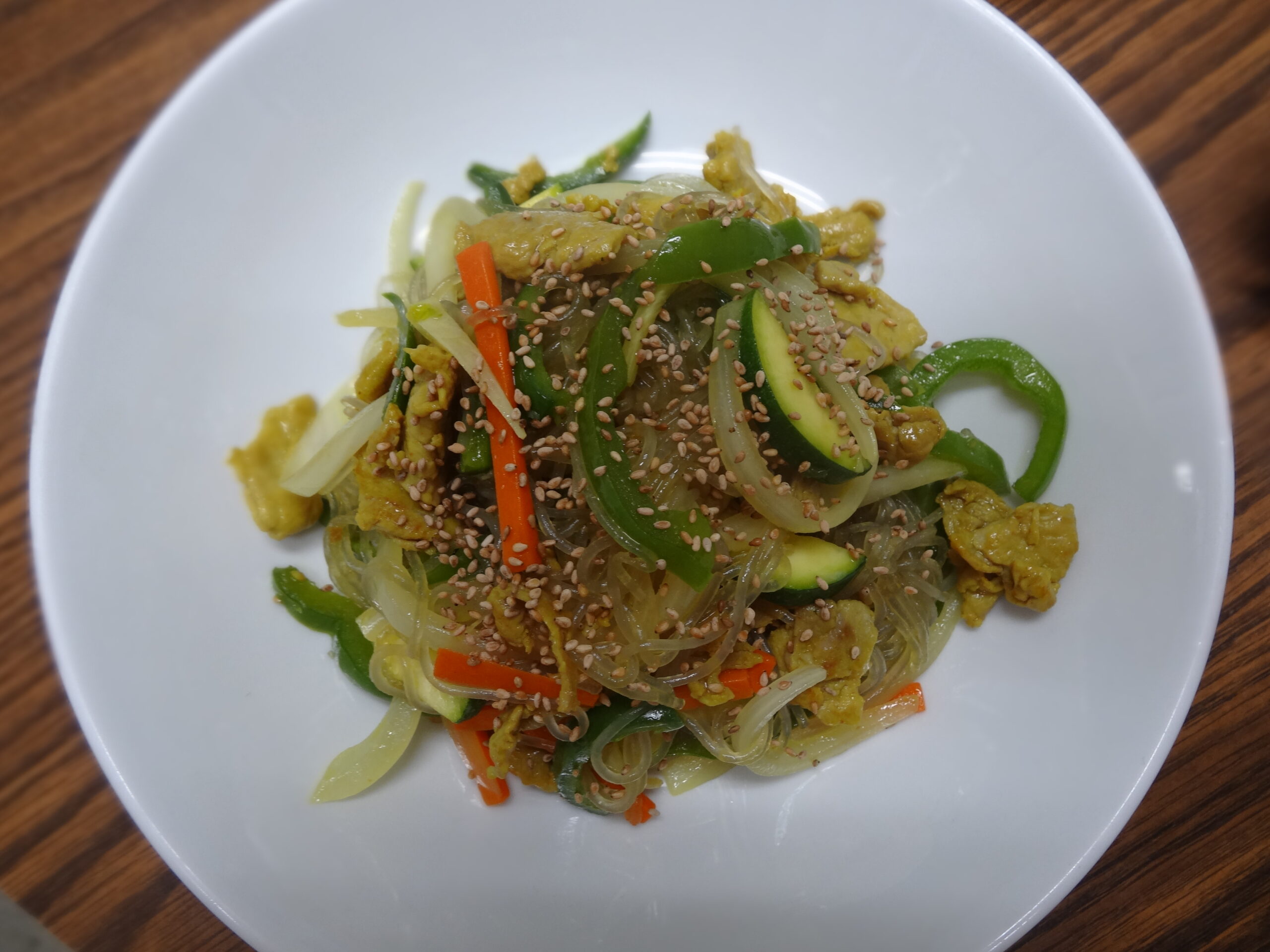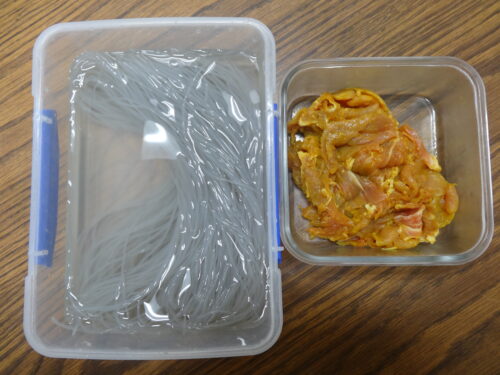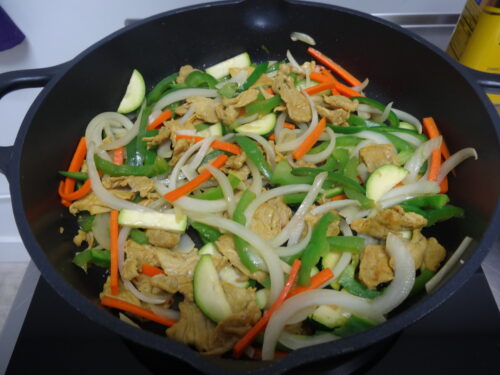

- 말린 미역 30g (나중에 불려보니 양이 엄청 많았다. 15g만 해도 충분할 것 같다)

- 오이 작은 것 5개
- 양파 중간사이즈 1개
- 쪽파 3개
- 미역의 양이 많아서 오이도 많다.
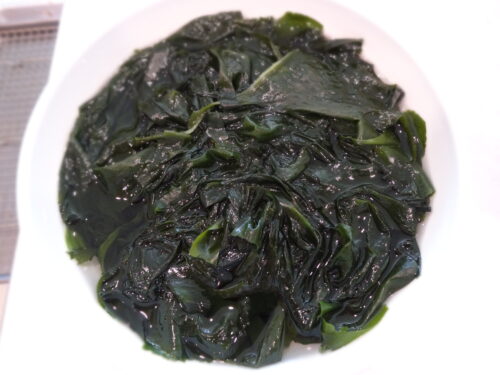
- 미역을 15분 이상 불린다.

- 2-3번 뒤적여 주고 30초 후에 불을 끈다.

- 데친 미역은 손으로 물기를 꼭 짜서 먹기 좋게 잘라준다.
- 오이와 양파는 얇게 채썰어 준다. 소금 2-3꼬집 뿌려서 살짝 절여준다.
- 쪽파는 쫑쫑 썰어준다.
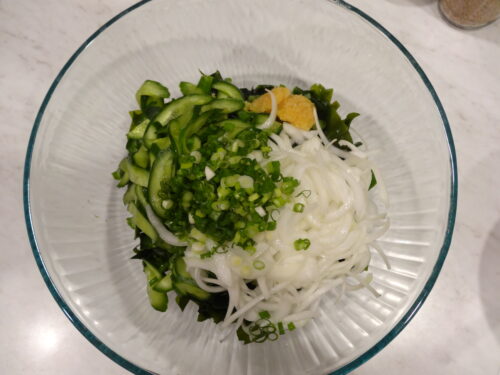
- 큰 보울에 모든 재료를 담고 준비한 양념(아래)을 넣어 버무려 준다.
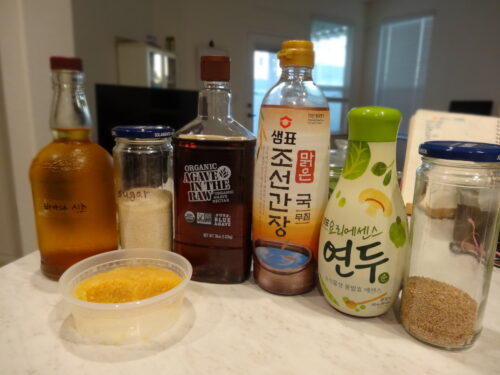
- 미역오이 초무침은 새콤달콤한 맛이 포인트.
- 조선간장 2T, 연두 2T(신상품) 로 간을 해 주고
- 연두가 없으면 조선간장 4T
- 식초 4T 로 새콤한 맛을 내주고
- 설탕 1T, 아가비 1T 로 달콤한 맛을 넣어주고
- 마늘 2T 로 감칠맛을 추가하고
- 참깨 1T를 넣어 고소한 맛을 더했다.
- 그래도 간이 좀 부족한 듯 하여 소금을 몇꼬집 더 뿌리고 새콤한 맛이 아쉬워서 레몬즙을 1T 더 추가했다.

- 오랫만에 만들어서 양이 두배가 되었다.

- 새콤달콤한 미역오이 초무침과 매콤한 할로삔뇨가 이렇게 궁합이 좋을 수가.
- 얼마전에 하루와 애벌린이 와서 미역오이 초무침을 먹고 싶어 하길래 오랫만에 만들어 주었다. 아침을 안먹는 애벌린에게 밥없이 미역오이 초무침만을 내 주었다. 뭔가 좀 매운맛이 아쉽다고 해서 ‘간장에 절인 할로삔뇨’를 꺼내 주었다. 아주 좋아하며 잘 먹었다. 내가 먹어봐도 궁합이 꽤 좋았다. 이런 발상은 나는 잘 못한다. 왜냐하면 나는 톡 쏘는 매운맛을 즐기지 않기 때문이다. 남편도 이런 매운 맛을 좋아해서 아이디어를 주곤 한다. 나와 다르기 때문에 가능한 일인듯 하다. 미끄덩한 미역의 식감이 친숙하지 않은 사람들은 가끔 매콤한 할로삔뇨를 곁들인다면 훨씬 맛있게 먹을 수 있을 것 같다. 미역은 각종 미네랄과 비타민,식이섬유가 풍부한 정말 건강한 식재료다. 추운날 뜨듯한 미역국을 한그릇 먹고 나면 내 몸이 필요한 모든 것을 채워주는 느낌이다. 더운 날씨가 가고 있으니 곧 미역국을 끓여서 올려야 겠다.

